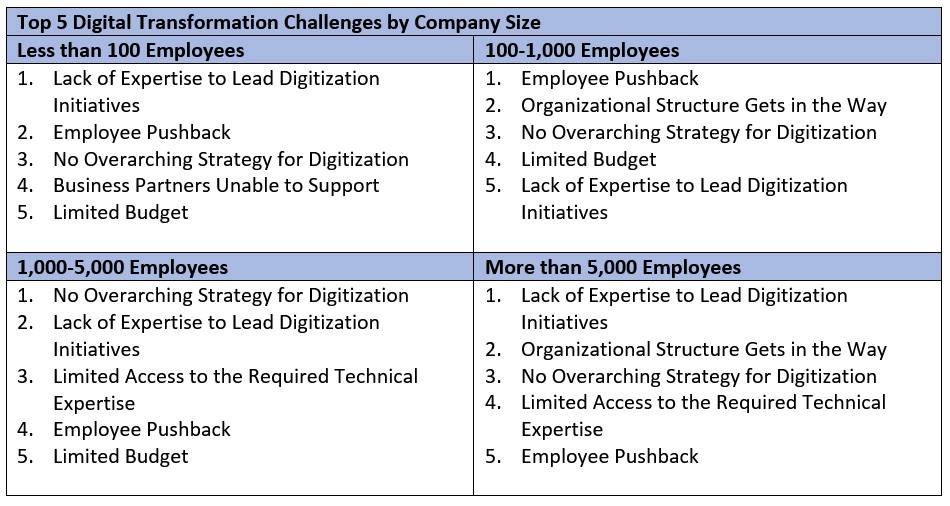Abstract
Embarking on a digital transformation strategy can be daunting, complicated and expensive. Most organisations today do not know where to start, so formulating an approach is critical to delivering the desired outcomes. Transformation implies all encompassing. This means that all components of the organisation need to transform to realise the desired outcome of digitisation. To illustrate, let’s take a simple example:
The Covid-19 pandemic forced a new reality where most people had to work from home during lockdown and work collaboratively to execute their functions. Implementing this kind of capability requires a collaboration platform, technology infrastructure, connectivity with enough bandwidth, and unified communications with the ability to take landline calls remotely. Further, all these various components must be integrated in order to deliver an outcome: working collaboratively and servicing clients from any location. However, it is the human component that is imperative to making the function work. Hence, transforming the human component is a critical success factor to digital transformation as it now requires people to work differently and, often, to acquire different skills. It does not help if all the technology components work and the process fails at the human level.
The objective of this article is to formulate a high-level approach to digital transformation by:
- Understanding what digital transformation is.
- Identifying the best approach to embarking on this journey.
- Uncovering the components that make up the digital ecosystem and the framework that links everything together.

It must be noted that digitisation or digital transformation means different things to different people. We therefore need to understand what “digital transformation” is at a simplistic level. For the purposes of this article we will focus on the digital eco-system and not digital platforms. There is no one-size-fits-all approach, but the key is to understand the foundational components and be guided by a generic framework.
Over the last four decades, technology has grown and transformed exponentially. Despite this, the basics and underlying fundamentals have not changed. However, the impact on society and humanity has been immense. Digitisation is very much about social change. Over the past decade, we have seen tremendous disruption to whole industries as the world shifted to the digital platform economy. Where the industrial revolution was organised around the factory, today’s changes are organised around these digital platforms. To remain relevant, the business models of business and governments must adapt to these social changes. Digital transformation within organisations seeks to leverage all components of the value chain in a tightly integrated ecosystem ensuring fluidity, agility, speed, and a high degree of responsiveness, with the customer being central to this transformation.

Figure 1: Customer centricity is a core principle of a digital transformation endeavour.
Customer experience (CX) is core to the digital transformation project and every initiative within this project is started with the customer in mind.
Problem Statement
Most organisations use a piecemeal approach to digital transformation with no clear over-arching strategy and are often led by vendors who themselves are unable to apply unbiased advisory services with respect to an approach and strategy. You cannot start a journey if you do not know where you are going. Jumping aboard the hype wagon can also expose an organisation to significant risks. One of the key challenges is organisational transformation where the human resource component is change managed to work in a way that is aligned to the transformation outcomes. Talent is a key enabler to the digital transformation project, and roles will be impacted. Capabilities like robotic process automation (RPA) will make roles redundant and the organisational digital strategy should ensure organisational re-alignment where redundant roles are re-deployed in roles that require human attributes and adds value to organisational efficiency and customer experience.

Table 1: Digital transformation challenges (Source: Jabil Digital Transformation Survey).
Re-imagine the Business…
The thinking should be: “How do we harness these capabilities in an integrated way (a digital pattern) that drives innovation (both internally and externally) and delivers a superior customer experience seamlessly, efficiently, and at a cost that is substantially lower than the value produced. How do we re-imagine the business? Covid-19 has changed the world forever and only organisations that are able to transform into this new business paradigm will survive and thrive.
Background
What is digital transformation?
Digital transformation is a journey, not a destination. Digital transformation is an evolutionary process. Wikipedia describes digital transformation as:
“…the use of new, fast and frequently changing digital technology to solve problems. One of the examples of digital transformation is cloud computing. It reduces reliance on user owned hardware and increases reliance on subscription based cloud services. Some of these digital solutions enhance capabilities of traditional software products (e.g. Microsoft Office compared to Office 365) whilst others are entirely cloud based (e.g. Google Docs).”
While the above description is relevant, one needs to go further as digital transformation is the integration of all technologies (digital) that fundamentally change the way the business works and makes the customer core to the organisation’s digital capability. Digital implies non-legacy as the underlying foundational pillar is integration. The key attributes within the digital landscape are:
- Integration
- Agility
- Speed
- Responsiveness
- Scalability
- Always available and always on
Social change is a critical factor that drives the digital world and is key to formulating your own digital journey. We are seeing exponential change with a different set of dynamics playing itself out in the way we engage and interact in the social sphere. The way we play, shop, entertain and socially engage is forcing companies to change their business models. As an example, today’s Generation Z has a Spotify subscription for music, engages socially on Instagram, shops on Wish, has a YouTube channel, makes their own videos, posts to Tik Tok, do online tutorials to learn new skills, can build their own website. They have high service expectation, want instant responsiveness and think everything must work. They prefer video to reading, prefer video chats to phone calls, they engage through messaging platforms. COVID-19 has accelerated this, forcing the older generations into the digital world to shop, work, collaborate, engage, learn and socialise.
Digital transformation is evolving the organisation to a different paradigm of working, thinking and engaging with customers. It’s where the technology just works and scaling the infrastructure is a matter of flipping a switch. It’s all about data and very little about the infrastructure. It’s where budgeting for expensive storage hardware is a thing of the past and it is essentially a matter of “pay as you need”.
Old Paradigm vs New Paradigm:

Figure 2: Transforming from the old to the new.
Approach
The approach to be adopted must be pragmatic, support the business priorities and factor in industry and social trends. Following the advice below will help you on the way to a digitally transformed enterprise:
- Identify the areas of the business or processes that are core to business operations and strategy.
- List these functions and processes in order of prioritisation where technology enablement can make the biggest impact. Each digital transformation project must impact positively on customer experience.
- Start with the end in mind. This will never be cast in stone due to the uncertain and dynamic world that we live in, but journeying towards a future or transformed state is imperative.
- Keep things simple. Streamline business processes. Do not enable broken processes. Businesses often over-complicate their processes and then expect the technology to enable them. The goal should be to align to the technology templates as these technology platforms and systems have been developed on best practice.
- Start small and think big.
- Re-imagine the business.
- Identify high-value data and leverage.
- The four key focus areas, namely: DATA, TECHNOLOGY, SKILLS and TALENT, and the BUSINESS OPERATING MODEL. These elements must get equal attention as collectively they are key enablers of digital transformation.
- Re-purpose technology.
- Implement a change management programme to drive organisation re-design, re-skill, re-deploy and talent development.

Figure 3: Digital transformation approach.
The aim is to mature an organisation from disparate legacy systems with manual processes and significant labour overhead, to an ecosystem of digital capabilities that is fluid and agile in solving business problems and delivering a superior customer experience. The outcome should be a business that produces value that is infinitely more than the cost of producing this value. How do we harness these capabilities in an integrated way that forms a matrix of a digital pattern? One that not only enables your business but allows your business to remain relevant and competitive in an unpredictable world where change is exponential.

Diagram 4: Key components of the transformational project.
Digital Transformation Framework

The framework appears complex, but what it comes down to is priority. The priorities must be aligned to the business strategy and the processes that are core to delivering the key services of the business to its customers. As a medium-sized enterprise, your digital strategy at a very simplistic level might look something like this:

Figure 5: Implementation example.
The outcomes that you want to achieve include:
- Integrated and automated backend operational processes.
- Cloud adoption to reduce costs and drive down capital expenditure.
- Tools to increase staff productivity.
- Work-from-home capability.
- Data architecture that enables the digital environment and customer experience.
- Informed decision making and accessibility of digital reports.
- Automated mundane tasks to free up human resources and drive down costs.
- Excellent customer experience.
The objective is to approach the digital transformation of your organisation in a very pragmatic way. This article provides a generic framework for approach and implementation that can be tailored to any organisation. Successful IT projects are determined by good governance and strong executive support aligned to business strategy. All the underlying delivery mechanisms such as programme and project management together with governance are still key success factors. However, within the digital paradigm there are requirements of agility, responsiveness, and speed. This requires the breakdown of organisational siloes, creation of a collaborative engagement among teams, and a comprehensive change management programme with the transformation process driven by a C-level executive.
The Covid-19 pandemic has reshaped the world and organisations, forcing transformation at all levels including the transformation of human beings. Digital transformation projects that were not deemed important were suddenly prioritised, executed and implemented successfully. The very survival of these organisations depended on these projects and this was the “first wave” – enabling staff to work remotely, collaborate and engage with team members and customers. The pandemic has changed our world forever. We can expect more sustainable projects that inform sustainable transformation and position business for the near to medium term. Digital platforms have disrupted whole industries, delivering unprecedented convenience and customer experience. Now we are experiencing what is potentially the biggest disruptor of modern time.
The Fourth Industrial Revolution represents a fundamental change in the way we live, work and relate to one another. It is a new chapter in human development, enabled by extraordinary technology advances commensurate with those of the first, second and third industrial revolutions. These advances are merging the physical, digital and biological worlds in ways that create both huge promise and potential peril. The speed, breadth and depth of this revolution is forcing us to rethink how countries develop, how organisations create value and even what it means to be human. The Fourth Industrial Revolution is about more than just technology-driven change; it is an opportunity to help everyone, including leaders, policy-makers and people from all income groups and nations, to harness converging technologies in order to create an inclusive, human-centred future. The real opportunity is to look beyond technology, and find ways to give the greatest number of people the ability to positively impact their families, organisations and communities.
WORLD ECONOMIC FORUM








